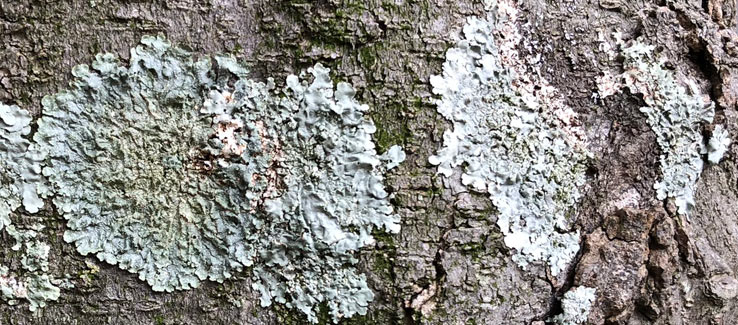Will This Green Mold (Lichens) Growing on My Tree Kill It
Do you have a mold-like greenish substance growing on your tree trunk or branches? Don’t break out the pruning shears so fast, you may be surprised to discover what it is and what it means.
fasttreeremovalatlanta.com gathered the following information about what lichens are, where they grow, and what they mean.
What are Lichens
Lichens are formed from a symbiotic relationship between a fungus and an algal partner and can grow on nearly any surface.
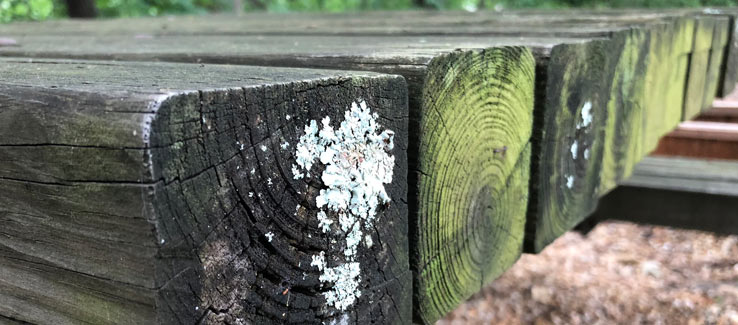
The Fungal Partner – The filaments of the fungal partner (mycobiont) surround and grow into the algal partner’s cells. The fungal partner represents the majority of the lichen’s physical bulk and shape, forms the outer surface for protection and support, and collects both moisture and minerals from the air.
The Algal Partner – The algal partner (phycobiont) possesses chlorophyll used to make food when exposed to sunlight, thus creating the symbiotic relationship needed for the two species to thrive as one.
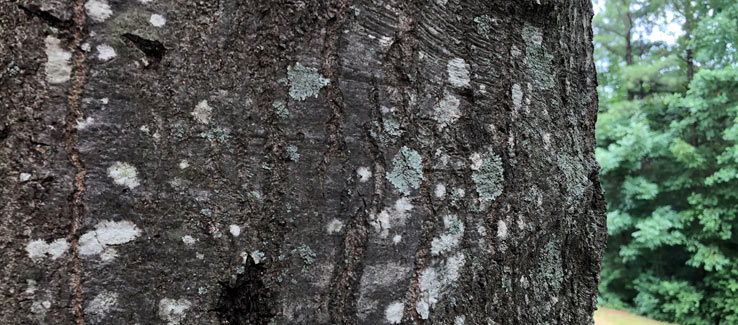
Lichens differ from plants in that they do not have leaves, stems, roots, or a waxy outer surface to regulate its water content. When dew, mist, and rain are present, the lichens continue to grow. In summer or during dry periods, they will lie dormant waiting for the next rainfall.
When moisture is unavailable, lichens may suffer a complete loss of body water and become brittle. During these times, pieces may break or flake off, settling in a new location, and later growing into new lichens. When moisture becomes available again, they quickly absorb water, becoming rehydrated, soft, and fleshy again.
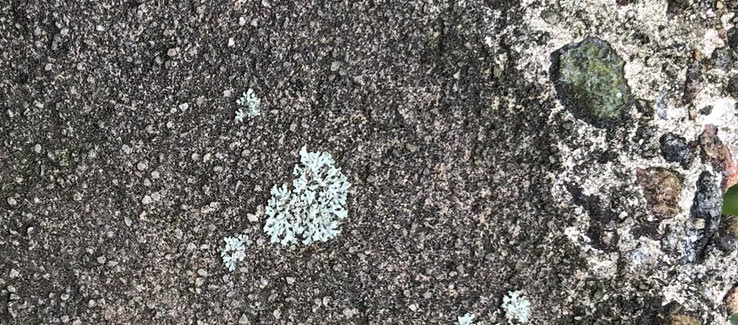
Lichens can adapt to their location and can be found in nearly any environment growing on trees, stones, wooden decks, glass, and any other surface that combines sunlight and moisture.
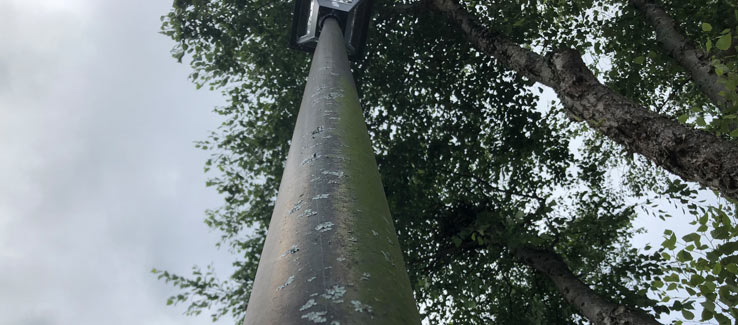
Lichens on Trees
Lichens are commonly found on trees and are frequently misinterpreted as being a sign of decay within the tree. Unlike the fungi that feed off of a tree’s decaying body, the rhizines (multicellular root-like structures) of lichen only serve to anchor its body to the tree, rarely penetrating the bark completely.
Lichens do not feed on a tree’s nutrients. They are a self-sufficient organism, producing their own food, therefore doing no harm to the tree.
The confusion begins when a tree starts to die. As the tree loses its foliage, more sunlight becomes available to the lichens coincidentally, and their growth rate increases. Due to this coincidence, many believe that the mere presence of lichens is a signal of a diseased or a dying tree.
A diseased, stressed, or dying tree may have both lichens and unrelated fungal organisms growing on the same portion of the tree. In such cases, you or your tree expert may need to prune away the affected or dead tissue for the benefit of the rest of the tree. In making these types of decisions, you need to be aware of the unique nature of lichens and the difference between those fungi participating within a lichen symbiotic relationship and other fungi separately feeding on the tree.
You can learn more about Warning Signs, Problems and Solutions for Trees by reading fasttreeremovalatlanta.com/warning-signs-problems-solutions-atlanta-trees
Fungus and Lichen Identification
There are several differences between fungi and lichen on trees. You can identify a fungus or fungal infection on a tree by:
• Mushroom conks (reproductive structure) on the tree.
• Swollen areas of bark
• Dark streaks are oozing or running down the tree trunk from a knot or wound.
• Cankers are forming on branches or trunk.
• Carpenter ants are establishing a nest within the tree.
• Extreme leaf drop (out of season).
• Chlorosis (loss of green color) of part of or the entire crown.
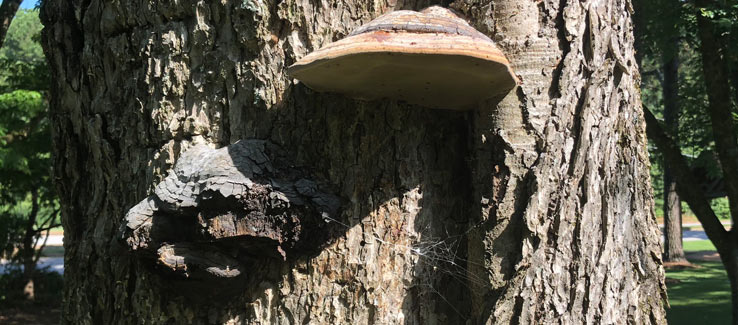
You can identify a lichen on a tree by:
• A flat green, bluish, or greyish growth along the surface of tree bark.
• The absence of symptoms of a fungal infection.
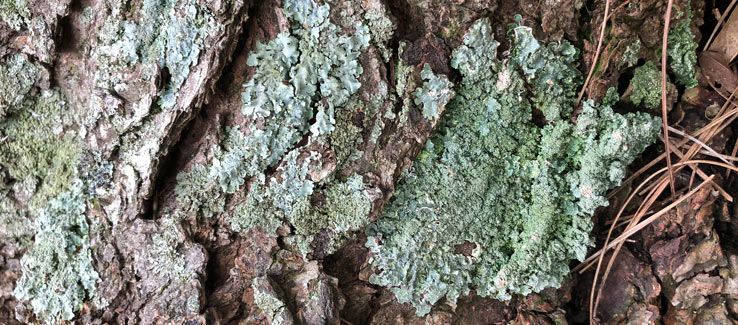
There is little cause for concern when lichens are found growing on the bark of a tree, but when a fungus is thriving on a tree trunk or branch, immediate action must be taken to prune, treat, or remove the tree.
Benefits and Uses of Lichens
While lichens may seem to provide little benefit, they are widely studied and used in ways that may surprise you. Lichens are consumed by animals like deer, goats, and caribou, while many species of birds use lichen materials to help build their nests.
Certain species of lichens are used to produce antibiotics, while others are used to create the miniature landscape for scale sized building models and model railroad tracks.
Lichens found on healthy trees should be welcomed as positive indicators of lower levels of air pollution and good quality atmospheric conditions. Lichens tend to die off in overly polluted areas.
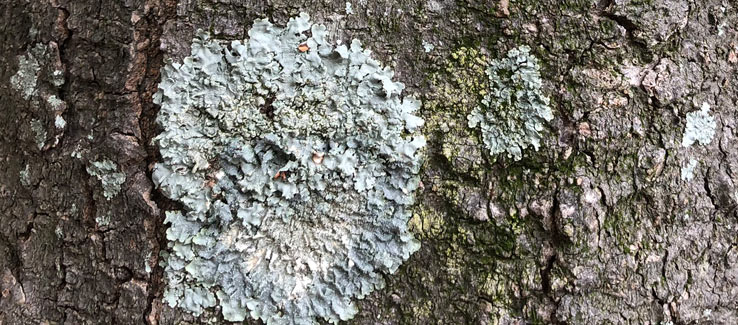
Trees and Lichens
Lichens growing on trees may seem like a sign of trouble, when in fact, they are a sign of clean air and do little to no harm to the tree.
In this article, you discovered that lichens growing on trees do not represent a threat to the tree’s health, their benefits to medicine, how to tell them apart from a fungal infection, and their use in creating model landscapes.
Knowing how to identify lichens on your trees will save you from worrying about the dangers of a fungal infection. Furthermore, their presence should be heralded as a testament to the good air quality of your neighborhood.
Sources:
https://www.canr.msu.edu/news/what_are_lichens_and_what_are_they_doing_on_my_tree
https://ucmp.berkeley.edu/fungi/lichens/lichenlh.html
https://njaes.rutgers.edu/fs1205/
(404) 220-9965
(404) 220-9963

